When he was interviewed between periods of the clinching Game 4 of the Finals, the Fox interview shown on the scoreboard screen at the Brendan Byrne Arena, a full house of 19,040 Devils fans chanted, "Bettman sucks!"
"Let it be known," Bettman said to Fox (and Devils) announcer Mike Emrick, "that hockey fans are passionate!"
The Devils won the Cup, and stayed. On December 18, 1996, the Nashville Arena, now named the Bridgestone Arena, opened. On June 25, 1997, Bettman granted an expansion franchise to Nashville. On October 10, 1998, the Nashville Predators played their 1st game.
This coming Thursday night, the Devils travel to Nashville, but only for 1 game, to play the Predators. All has been forgiven for the attempt to move the Devils there over 20 years ago.
Before You Go. Nashville is in the South. Not the Deep South, but the Mid-South. However, Tennessee rejoined the Union a long time ago, and you won't need to bring a passport or change your money.
If you were going to a baseball game, or an early-season football game, the heat might be an issue. But this will be at the beginning of March, so even outside the arena, heat won't be a factor. What could be a factor is rain: The website of Nashville's main newspaper, The Tennessean, is predicting thunderstorms. As for temperatures, they're talking low 60s for daylight and mid-30s for night. You might not need a jacket in the afternoon, but you'll need a winter jacket at night.
Nashville, like most (but not all) of Tennessee, is in the Central Time Zone, an hour behind us. Adjust your timepieces accordingly.
Tickets. The Predators are averaging 16,881 fans per home game this season, about 98.6 percent of capacity, a slight increase over last season. Tickets might be hard to get.
Seats in the lower level, the 100 sections, go for $165 between the goalss and $93 behind them. Seats in the upper level, the 300 sections, go for $45 and $32.
Getting There. It's 892 miles from Midtown Manhattan to downtown Nashville, and 881 miles from the Prudential Center to the Bridgestone Arena. So your first instinct would be to fly. This looks like a good idea, since a round-trip flight could cost under $500. The downside: Changing planes in Charlotte. Nashville International Airport is 8 miles east of downtown, and the Number 18 bus can get you to downtown in under half an hour. (The airport was originally named Berry Field, after Colonel Harry S. Berry, the Tennessee administrator for the New Deal's Works Progress Administration.)
You can't take Amtrak: It doesn't serve Nashville. Greyhound can get you from New York to Memphis in a little under 30 hours, for $308 round-trip, although it could drop to as little as $176 with advanced purchase, although you'd have to change buses in Richmond. The Greyhound station is at 709 5th Avenue South, 5 blocks south of the arena.
If you do drive, it's far enough that you should get someone to go with you, to trade off, especially if one can sleep while the other drives. Get into New Jersey, take Interstate 78 West into Pennsylvania. At Harrisburg, get on Interstate 81 South, and take that down through Maryland, West Virginia and Virginia, into Tennessee, where it flows into Interstate 40 West. Take that halfway across Tennessee. Exit 210 is for downtown.
If all goes well, you should spend a little over an hour in New Jersey, 2 hours and 45 minutes in Pennsylvania, 15 minutes in Maryland, half an hour in West Virginia, 6 and a half hours in Virginia, and 2 hours and 45 minutes in Tennessee, for a total of 13 hours and 45 minutes. Given rest stops in Pennsylvania, one at each end of Virginia, and 1 in Tennessee, and we're talking about a trip of at least 17 hours -- each way.
Once In the City. Founded in 1779, and named for General Francis Nash, killed in the Battle of Brandywine outside Philadelphia in the War of the American Revolution, Nashville is in central Tennessee. It is the State capital, home to 627,000 people with a metropolitan area of about 1.9 million.
The State House, formerly featured on Tennessee license plates.
That statue of Andrew Jackson, Tennessee pioneer,
has copies in Washington across from the White House,
and in downtown New Orleans.
The sales tax in Tennessee is 7 percent, and within Davidson County, including Nashville, 9.25 percent, even higher than New York's. Address numbers on east-west streets increase away from the Cumberland River, and Broadway separates north from south. The The Nashville Metropolitan Transit Authority (NMTA) runs buses, with a $1.75 fare, and the Music City Star, a commuter rail service to the city's eastern suburbs, with a fare double that, $3.50.
The Music City Star, with Nissan Stadium,
home of the Titans, in the background
The Arena, easily identifiable with its sloping roof and its antenna at the north end, opened in 1996, with the generic name Nashville Arena. It was renamed the Gaylord Entertainment Center in 1999, after a locally-based media company that was a minority stockholder in the team. In 2005, Gaylord sold its stock, and in 2007 the arena was renamed the Sommet Center, after Sommet Group, a local company that oversaw software development and payroll services. But Sommet was a company built on fraud, its founder went to prison, and in 2010 locally-based tire company Bridgestone bought the naming rights, and holds them to this day.
The rink is laid out north-to-south, and the Predators shoot twice toward the south end.
The Arena has hosted Southeastern Conference Tournament, Ohio Valley Conference Tournament, and NCAA Tournament basketball -- in each case, both men's and women's. It hosted the Women's Final Four in 2014. The Country Music Association (CMA) Awards have been held there since 2006.
Food. Memphis has a reputation as a city of fine Southern food, particularly barbecue. Nashville, less so: They're known for music first, and food, and everything else, somewhere down the line.
Delaware North runs the concessions. There's a Main Food Court behind Sections 101 and 102 at the north end. Nathan's hot dogs and Dunkin Donuts are served throughout the Arena. Other chains available including Whitt's Barbecue, Hunt Brothers Pizza, Popcornopolis, Nuts About Nashville, Christie Cookies (hopefully not named for a Governor of New Jersey or two) and Dippin Dots. They also serve Bacon On a Stick. The South.
Team History Displays. The Nashville Predators began as an NHL expansion team in 1998 -- only the Columbus Blue Jackets, the Minnesota Wild, and the Atlanta Thrashers-turned-new Winnipeg Jets are newer franchises -- and while they've made the Playoffs in 8 of the last 11 completed seasons, and won postseason series in 2011 and '12, they've never won their Division (though they've finished 2nd 6 times, including last season), and have never gotten past the Western Conference Semifinals.
So they've got no titles of any kind. Nor do they retired any numbers for any player -- nor has any player who played for them yet been elected to the Hockey Hall of Fame.
But they do have 2 banners in the rafters: Honoring their 1st game in 1998, and their fans as the "7th Man" with a Number 7, which, indeed, is not worn by any current Predators player.
The Tennessee Sports Hall of Fame is located at the Arena. No Predators player has yet been inducted.
Stuff. The Nashville Predators Team Store is located on the east, 5th Avenue side of the Arena. The usual team-related gear can be found there.
As one of the NHL's newer teams, there are no NBA Finals DVD packages for the Predators, and books about them are few and far between. In time for the team's 10th Anniversary in 2008, Craig Leipold published Hockey Tonk: The Amazing Story of the Nashville Predators. I wouldn't say their story is "amazing," but as expansion franchises, go, and as Sun Belt hockey teams go, they've done okay.) This past Auturmn, Justin B. Bradford and Pete Weber collaborated on Nashville Predators: The Making of Smashville.
During the Game. A November 19, 2014 article on The Hockey News' website ranked the NHL teams' fan bases, and listed the Predators' fans 20th -- 1 place ahead of the Devils' fans. A slap to those of us who didn't want the Devils moved to Nashville? Their explanation of the ranking: "Preds known for fun fan experience but don't sell out, have low Twitter following." I don't know if Twiter followers is a good gauge of fan interaction, but attendance is, and the Preds fill the Bridgestone Arena to 99 percent of capacity. So THN are lying about something.
Nashville people don't like Memphis people. And Tennessee people don't like Arkansas, Alabama, and Florida people -- holdovers from college football rivalries. And Predators fans really don't like the Chicago Blackhawks and their fans. That's about as far as rivalries go there. They don't have a particular problem with New Jersey. So as long as you don't make any wiseguy remarks about this being a North vs. South game, you shouldn't face anything beyond the usual nonviolent "My team rocks, your team sucks" talk.
Why the Blackhawks? Apparently, during Playoff matchups, Chicagoans buy up a lot of online tickets, make the 475-mile trip, and make nuisances of themselves. Sort of like Ranger fans making the much shorter trip to the Prudential Center. Except the Hawk fans make it worse, but cheering throughout the National Anthem, even when the Preds bring in country music superstars, like Vince Gill, a season ticketholder from Day One.
So the Preds have "In Gold We Trust," asking fans to wear the mustard-yellow (it sure ain't "gold") jerseys, and sing the Anthem along with whoever's singing it, usually some country singer or other (if not always a big star). It works pretty well.
Mike Fisher plays for the Predators. He's married to country superstar Carrie Underwood. If being the 2nd-most famous, and 2nd-best-paid, person in his own marriage (a rare thing for a male major league athlete) bothers him, he doesn't show it in public. Then again, this means that Carrie's married name is Carrie Fisher.
The Predators have the Predators Dancers, and their own Ice Girls -- and they sell cheesecake calendars with pictures of both. Their mascot is Gnash the Sabretooth Tiger -- Nash, short for Nashville, with a G at the beginning, so he can gnash his sabre teeth.
The mustard-yellow jersey and the bright blue claws
take some of the intimidation factor away.
You might want to stay out of Section 303, behind the north goal. Or, rather, Cellblock 303. It's their version of the Section 233 Crazies at the Prudential Center and the Blue Seats at Madison Square Garden. After each opposing player is introduced, they yell, "...SUCKS!" Okay, fairly common, and not as witty as Detroit Red Wing fans shouting, "Who cares?" But when the opposing head coach is introduced, they close with, "And he sucks, too!" That is a little different.
During the team's goal song, "Gold On the Ceiling" by the Nashville-based group the Black Keys, they do the familiar, "Hey: You suck!" After the song finishes, the sound-effects guy pushes a button for the roar of a sabretooth tiger, for each goal the team has scored thus far. The Predator fans yell, "That's one!" and "That's two!" and so on until reaching the correct number, followed by invoking the opposing goalie's name: "Thank you, Schneider, may we have another?" And while we have, "If You Know the Rangers Suck," they have, "If you're crappy and you know it, ice the puck!" Their victory song is "I Like It, I Love It," by Tim McGraw (Tug's son, to we baseball fans).
Oh yeah, there's another hockey tradition they've co-opted, one they probably should have left alone. You know how Detroit fans like to throw an octopus onto the ice? Well, when the Wings came to town in the 2002 Playoffs, Nashville fans responded by throwing that Southern pescatory staple, the catfish, onto the ice. (It probably had nothing to do with the 1966 Lovin' Spoonful song "Nashville Cats," although the Bridgestone Arena was formerly home to the Nashville Kats of the Arena Football League.)
A Predators Ice Girl, clearly not enjoying her job on the evening
After the Game. If there was an NHL team in Memphis, Nashville fans wouldn't like them. And we know they don't like Chicago. But they've never been known to turn on New Jerseyans. Devils fans shouldn't get any hassling, as long as they aren't the ones to bring it on.
Being in downtown Nashville, there are plenty of places to go for a postgame libation. Just don't call it a "libation" when you're in one, or you might get some funny looks. Robert's Western World, at 416 Broadway, is a honky-tonk famed for cold beer, fried baloney sandwiches and live country bands. Across the street, Rippy's specializes in barbecue. And there are many others.
However, I could find no place in Nashville catering to fans of any Tri-State Area team: Not the Yankees, the Mets, the Giants, and so on... and certainly not the Devils. Besides, Charlie Daniels thinks we went down to Georgia. (Which hasn't had an NHL team since April 2011.)
If you visit Nashville during the European soccer season, which we are now in, the best place to watch your local club is Fleet Street Pub, 207 Printers Alley, off Church Street between 3rd and 4th Streets downtown.
Sidelights. Nashville is about music 1st, Tennessee State government 2nd, and sports 3rd. But it's a good sports town, even though it's never had an MLB or an NBA team.
* Nissan Stadium. Home of the Tennessee Titans since it opened in 1999, it was known as the Adelphia Coliseum until 2002, simply The Coliseum until 2006, LP Field until last June. The 69,000-seat horseshoe has seen the Titans win the AFC Championship in its inaugural season, and nearly win Super Bowl XXXIV, and Division titles in 2000 (the old AFC Central), 2002 and 2008 (the new AFC South). However, the Titans haven't made the Playoffs since the 2008 season, haven't won a Playoff game since January 2004, and have gone just 5-27 the last 2 seasons.
It's also been a soccer facility, including hosting the U.S. national team in a 1-0 loss to Morocco in 2006, a 3-0 win over Trinidad and Tobago in 2009, a 1-0 loss to Paraguay in 2011, and a 4-0 win over Guatemala last July. That was game was riddled by operational and logistical issues, and even before kickoff, the Twittersphere exploded with discussions of the stadium's inadequacy.
1 Titans Way, across the River from downtown.There's no bus service, but it accessible from downtown by walking across the John Siegenthaler Pedestrian Bridge, which makes for a great visual on Titans gamedays.
* Vanderbilt University. If there was an "Ivy League" for Southern schools, this school, founded by 19th Century railroad baron Cornelius Vanderbilt, would be one of them. It is superb academically, but those high standards have hurt it when recruiting athletes, who tend to go to less stringent schools, thus leaving Vandy, whose teams are called the Commodores after Cornelius' nickname, struggling within the Southeastern Conference in most sports. Their women's basketball team is an exception, but, even then, they are overshadowed by their neighbors in Knoxville, the University of Tennessee.
Dudley Field opened in 1922, but was demolished and replaced with Vanderbilt Stadium in 1981, although the playing surface is still called Dudley Field, for William F. Dudley, dean of the University's medical school and the founder of the precursor league to the SEC.
Vanderbilt's athletic complex
After leaving Houston following the 1996 season, the plan was for the Oilers to play at the Liberty Bowl in Memphis for 2 years, as the Tennessee Oilers, before moving to the new stadium in Nashville for 1999. But this was a public-relations disaster, as Memphians stayed away from Nashville's team in droves, heedless of the State's name on the team.
So after topping 32,000 in only 1 home game (the last, 50,677 seeing them beat the Pittsburgh Steelers to finish 8-8), and getting less than 18,000 in 2 of their games (the smallest NFL crowds since World War II, except for the Scab Year of 1987), Bud Adams took the hint, and swung a deal to play in Nashville a year early. Vanderbilt Stadium seated only 41,448 people, making it the smallest NFL stadium since the early 1960s, but they sold it out in 4 of their 8 games. The next year, they moved into what's now Nissan Stadium, and dropped the Oilers name to officially become the Tennessee Titans.
Vanderbilt Stadium is adjacent to Memorial Gymnasium, built in 1952 as a memorial to the servicemen and -women of World War II. It is unique in college basketball (although this was not he case when it opened) in that both teams' benches are behind one of the baskets. Other unusual touches, and its age (there are several Division I schools with older facilities still in use) have nicknamed it The Fenway Park of College Basketball. 210 25th Avenue South, about 2 miles west of downtown. Number 3 bus.
* First Tennessee Park and site of Sulphur Dell. The original home of Nashville baseball is its home once again. Sulphur Dell stood on the site from 1870 to 1969, but the original ballpark faced southwest, so the State House would be in view. This put the sun in the outfielders' eyes. Along with odors from a nearby dump wafting over, and the occasional flooding from the Cumberland River that forced some games to be moved to Vanderbilt University's field, this earned the stadium the nicknames "The Dump" and "Suffer Hell."
This wooden ballpark was demolished, and replaced with stadium of concrete and steel for the 1927 season. It seated 8,500 fans at its peak. But while the new park fixed the sun problem, it did nothing to get rid of the smell from the dump, and the shape of the plot of land forced a short right field fence with a terrace, much like Cincinnati's old Crosley Field and Houston's Minute Maid Park today. When the Yankees visited for an exhibition game, Babe Ruth refused to play his usual position of right field because of the little hill, and was moved to left field.
The team that played there the longest was called the Nashville Vols, short for "Volunteers," as the University of Tennessee (in Knoxville) calls its teams the Volunteers or the Vols, as Tennessee is known as the Volunteer State. They won Southern Association regular-season Pennants in 1901, 1902, 1908, 1916, 1940, 1943, 1948 and 1949; Playoffs for the SA title in 1939, 1940, 1941, 1942, 1943, 1944, 1949, 1950 and 1953; and the Dixie Series against the Champions of the Texas League in 1940, 1941, 1942 and 1949.
Hall-of-Famers who played for the Vols included Yankee pitcher Waite Hoyt and Pittsburgh Pirates slugger Kiki Cuyler. The 1940 Vols have been remembered as one of the greatest minor league teams. It featured future All-Star pitcher and Yankee World Champion Johnny Sain, former Detroit Tigers pitcher Cletus "Boots" Poffenberger going 26-9, and catcher Charles "Greek" George won the SA Most Valuable Player award. Unlike Sain, George he didn't play much in the major leagues, and after getting called up in 1945 due to the World War II manpower shortage, he punched an umpire during an argument and got unofficially blackballed from baseball. In his case, "Vol" might have been short for "Volatile."
The National Association, the governing body of minor league baseball, ordered that all leagues under its umbrella be desegregated for the 1962 season. Rather than comply, the Southern Association folded. The Vols, who valued staying in business over white supremacy, were inactive for 1962, but started again in the South Atlantic League for 1963. But they lost money, and folded.
Like the aforementioned Crosley Field, Sulphur Dell was used as a police impound lot, before being demolished in 1969 and being used as parking for State government buildings.
First Tennessee Park, named for a bank, opened on the site in 2015, and the Nashville Sounds moved in. It seats 8,500 people, with grassy outfield seating pushing capacity to around 10,000. It has a view of downtown Nashville. And it copied the idea of a guitar-shaped scoreboard from Greer Stadium.
The old address was 900 5th Avenue North, but it's now listed as 19 Junior Gilliam Way, for the Nashville native who wore Number 19 as a Brooklyn/Los Angeles Dodgers player and coach. A mile from downtown, and several buses go there.
* Herschel Greer Stadium. Named for the late former president of the Vols, this ballpark seats 10,300 people, with standing room pushing it to a possible 15,000, which made it one of the largest minor-league ballparks.
From 1978 to 2014, it was the home of the Nashville Sounds, who started out in the Double-A Southern Association, and moved to Triple-A, first to the American Association, and then, when that league was split up, to the Pacific Coast League. (Yes, I know, Tennessee is pretty far from the Pacific Coast.) The Sounds won Pennants there in 1979, 1982 and 2005, meaning that Nashville has won either a regular-season Pennant or a Playoff Pennant 17 times: 1901, '02, '08, '16, '39, '40, '41, '42, '43, '44, '48, '49, '50, '53, '79, '82 and 2005. (Compare this with Memphis' 10 and Knoxville's 3.)
The stadium was easily identifiable by its nod to Nashville being "Music City": A guitar-shaped scoreboard. But as Camden Yards and a series of new ballparks, in both the majors and the minors, rewrote the rules for what a baseball stadium should be in the 1990s, Greer Stadium began to be seen as outdated, and so a new park was built.
With the Sounds having moved out, its future is uncertain. 534 Chestnut Street, about a mile and a half south of downtown. The Adventure Science Center is next-door. Buses 8, 12 and 25 will get you to within a short walk.
The nearest Major League Baseball team is the Atlanta Braves, 246 miles away, with the Cincinnati Reds a little farther away at 272 miles. According to an April 24, 2014 article in The New York Times, baseball fandom in Nashville is set by TV watching: The 3 most popular teams are the Braves, the Yankees and the Boston Red Sox, with some people rooting for the Braves and the Reds due to the comparative proximity.
The nearest NBA team is the Memphis Grizzlies, 213 miles away. But Nashvillians don't root for the Grizzlies, because of the inherent Intra-Tennessee rivalry. For those who care about the NBA at all, according to a May 23, 2014 article in The New York Times, they tend to divide their fandom among the "cool teams": The Los Angeles Lakers, the Chicago Bulls, the Miami Former LeBrons, and the Cleveland Once-and-Again LeBrons.
The city's current pro soccer team, Nashville FC, began play in 2013, in the National Premier Soccer League, the 4th tier of American soccer. It plays at Vanderbilt Stadium. The nearest Major League Soccer team is the Columbus Crew, 383 miles away, at least until the 2017 season, when Atlanta United begin play.
UPDATE: In May 2016, the United Soccer League, the 3rd tier of American soccer, announced that a team would begin play in Nashville in 2018. It is possible that they will simply buy out Nashville FC, and promote it. This would also save them from having to build a new stadium from scratch, or renovate Herschel Greer Stadium for soccer use, as Nashville FC have considered.
Don't expect Nashville to get teams in MLB, the NBA or MLS: The South really doesn't care about soccer, the metro area would rank 28th in population among NBA markets, and it would rank 31st, dead last, in baseball.
* Ryman Auditorium. If country music has a Yankee Stadium or a Madison Square Garden, this is it. The Mother Church of Country Music, a.k.a. the Carnegie Hall of the South, is easily the most 2nd-most famous building in the State of Tennessee, behind Graceland, the Memphis home of Elvis Presley, who performed at the Ryman very early in his career, on October 2, 1954.
Opened in 1892, it began hosting the weekly Grand Ole Opry ("grand old opera") radio show on Nashville radio station WSM in 1943 (though the show had been broadcast since 1925). The Auditorium seats 2,362 people, and with stars announced ahead of time, there were occasions when thousands had to be turned away.
By the 1960s, the building had deteriorated, and complaints about the dressing rooms grew louder: The men had to share a small one, and the women had to use a restroom. Roy Acuff, often called the King of Country Music, bought an adjacent building just so he'd have a decent place to change. And a new house for the Opry was planned. A wooden circle was cut from the stage, and transplanted to the new Opry House, much like home plate or a square of sod is sometimes removed from an old ballpark and put in the new one.
"I never want another note of music played in that building," Acuff said. He had reason beyond his bitterness over the dressing room: He was a major stakeholder in Opryland USA. (He was a bit about the money: In 1948, he was the Republican nominee for Governor of Tennessee. He lost.) But he died in 1992, and, against heavy odds, the building survived him. Ed Gaylord of Gaylord Entertainment bought the building's parent company, and had it restored.
The Ryman reopened in 1994, with its main entrance moved from the west side on 5th Avenue to the east side on 4th, plus an addition that included, yes, suitable dressing rooms, and, for the first time in its 102-year history, air conditioning. In 2012, the original stage (all but a small portion of it, left for historical reasons) was replaced as part of new renovations.
The Opry has returned every winter, while still broadcasting from its new home the rest of the year. ABC broadcast The Johnny Cash Show live from the Ryman, and Cash -- whose birthday would have been today, February 26, were he still alive -- is among those country legends whose memorial service has been held there.
The revival of the Ryman has coincided with the revival of downtown Nashville, including the construction of the Arena, the Stadium, and the city's first real skyscrapers. 116 5th Avenue North.
* Nashville Municipal Auditorium. While Elvis had many recording sessions in Nashville, after 1954 he didn't give another concert in the city until July 1, 1973, a matinee and an evening show at the Municipal Auditorium.
Opened in 1962, it still hosts concerts and sporting events. It's hosted minor-league hockey, and had the Devils actually moved to Nashville for the 1995-96 season, it's likely they'd have played at the Auditorium for a year before what's now the Bridgestone Arena opened. 417 4th Avenue North, downtown, 3 blocks from the State House.
The Beatles never performed in Nashville as a unit, although individual members did so on their solo tours.
* Grand Ole Opry House. As with sports venues, the Opry decided in the 1960s to leave the city for the suburbs, and create a family atmosphere, even adding an amusement park. Opryland USA opened in 1972, and the Grand Ole Opry House in 1974. The oak circle from the Ryman stage was placed at center stage, and lead singers stand there.
The new theater (no longer so new) seats about 4,000, and had all the amenities that the Ryman did not yet have. I visited Nashville in 1991, before it became a major league sports city, and the group I was with visited Opryland USA and had a great time. But I wanted to see the Ryman. I knew I couldn't get inside, but I still wanted to reach out and touch the brick.
Of course, at this time, Camden Yards was rewriting the rules for stadium and arena construction, and cities took back their leadership role from the suburbs. Attendance dropped, and in 1997, Gaylord Entertainment closed the theme park. The Opry House remained in operation, and the Opry Mills shopping mall and the Opryland Resort & Convention Center opened on the site of the park in 2000.
When the Cumberland River flooded in 2010, my first concern should have been for the people -- and 31 people died, in 3 States -- but it was for the Ryman. Instead, it sustained only minor damage, while the Arena, the Stadium, and the Opry House all got socked, especially the Opry House. It was able to reopen in 6 months, while the show was broadcast from the Ryman and other Nashville locations. 433 Opry Mills Drive, about 9 miles east of downtown. Number 34 bus.
* Museums. Nashville isn't all about country music, although within a few steps of the Ryman (and the Arena) are museums dedicated to Johnny Cash (119 3rd Avenue S.) and George Jones (128 2nd Avenue N.), and the music in general at the Country Music Hall of Fame and Museum (222 5th Avenue S.).
The Tennessee State Museum depicts the State's history, including the Native America, colonial, early Statehood and Civil War periods. Its collection of Civil War memorabilia is one of the largest. It shares a downtown building with the Tennessee Performing Arts Center -- a boring-looking 1981 building that replaced its former home, the much more appropriate 1929 War Memorial Building. 505 Deaderick Street, between 5th & 6th Avenues.
There are 3 Presidents with connections to Tennessee. Al Gore should have made it 4, and he made enough mistakes that, if he had done any one of them differently, his rightful victory would have been too big to get stolen from him. But, like the 3 who actually did get into the White House, he wasn't born in Tennessee, but rather in Washington, D.C., when his father, Albert Sr., was a Congressman. (Both father and son would serve Tennessee in each house of Congress.) As for the other 3, 2 were born in North Carolina, and the other might have been: Andrew Jackson was born somewhere near the Carolina State Line, although no one is sure precisely where, and both North and South Carolina claim him.
But the 7th President (serving from 1829 to 1837) and War of 1812 General nicknamed Old Hickory is best known, as far as his residences are concerned, for being one of the founding fathers of the State of Tennessee.
The Hermitage was a plantation he owned from 1804 until his death in 1845. On that property, he and his wife Rachel lived in a log cabin until the main house was completed in 1821. It burned in 1834, and he then had the current house built. Today, conspiracy theorists would have blamed Henry Clay or the Bank of the United States for the fire, even though Jackson himself didn't. (He did, however, blame his political opponents for the smears against both him and Rachel that gave her a heart attack that killed her between the 1828 election and the 1829 Inauguration.)
Aside from George Washington's Mount Vernon and Elvis' Graceland, it's the most-visited former private home in America. 4580 Rachels Lane, in the town of Hermitage, 12 miles east of downtown. It's on a section of the Cumberland River known as Old Hickory Lake. The Number 6 bus gets you to within a mile and a half, and the bus and the walk combined takes about an hour.
The State Capitol, which opened just before the Civil War in 1859, contains the tomb of James K. Polk, the 11th President (1845 to 1849), and his wife Sarah. The man who waged the Mexican-American War and gained us a huge chunk of our West, including all of California, he has been hailed as a visionary and assailed as a warmonger and a racist. He chose to serve only one term, and died just 3 months after leaving office, the shortest retirement of any ex-President. Sarah outlived him by 42 years, a record for a Presidential widow, and only Grover Cleveland's wife Frances, at 50 years, had a longer retirement from being First Lady. 600 Charlotte Avenue.
The other President with a Tennessee connection is Andrew Johnson, the 17th President, who succeeded to the office on the assassination of Abraham Lincoln in 1865, and was impeached for a ridiculous reason: He fired his Secretary of War (also Lincoln's), Edwin Stanton, without the permission of the Senate. He believed that the law barring him from doing so was unconstitutional, and when the aforementioned President Cleveland challenged it in 1886, the Supreme Court said they were both right. For all the good it did Johnson: Surviving his Senate trial by 1 vote, he knew he couldn't get elected on his own in 1868, got back into the Senate in 1874 (welcomed by the men who had tried him with a standing ovation), and died the next year.
He was an unrepentant racist, making it odd that Lincoln would choose him for the Vice Presidency in 1864 (it was because he was the only Southern Senator who stayed loyal to the Union when his State seceded), and he remains a contender for the title of worst President ever. His hometown of Greenville, Tennessee is 250 miles east of Nashville. His museum is at 67 Gilland Street. (Charlotte, North Carolina is actually the closest major league city to Greenville, but it's not close.)
There's actually a 4th President with a minor connection to Nashville: In 2008, Barack Obama and John McCain had the 2nd of their 3 debates at the Black Box Theatre at Belmont University. Compton Avenue at Belmont Blvd., about 3 miles southwest of downtown. Number 2 bus.
Five of the six tallest buildings in Tennessee are in Nashville, only one in the larger city (but not larger metro area) of Memphis. The tallest went up in 1994, but has already changed names with one phone-service company buying out another: The South Central Bell Building, the BellSouth Building, and now the AT&T Building. At 617 feet high, its twin-spired roof has led to it being nicknamed the Batman Building. 333 Commerce Street.
Many music-themed movies have used Nashville as both a setting and a film location, including biopics of Elvis (Elvis, starring Kurt Russell), Patsy Cline (Sweet Dreams, starring Jessica Lange) and Loretta Lynn (Coal Miner's Daughter, starring Sissy Spacek). Each of these included the Ryman as a filming location. While the current ABC TV drama Nashville is filmed in Los Angeles, the 1975 film of the same title was filmed on location.
*
Nashville is more than history and music, as important as those things are. It's also the home of an NHL team that, while not yet very successful, is usually good, has developed quite a following among people you wouldn't think would take to hockey, and is now another good reason to visit this legendary city.
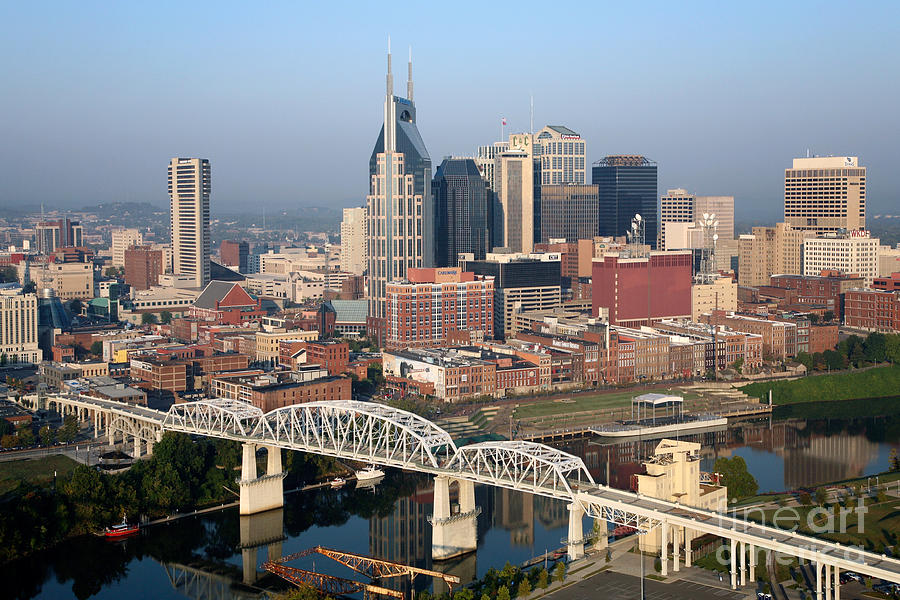
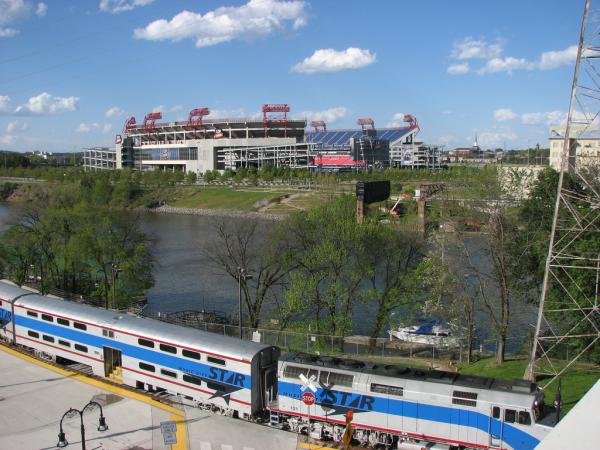
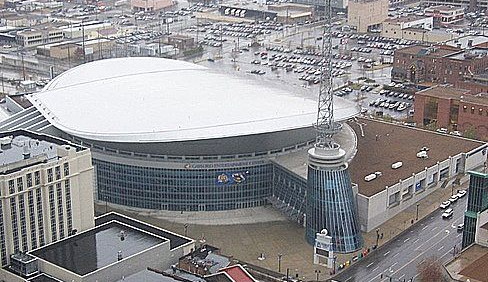


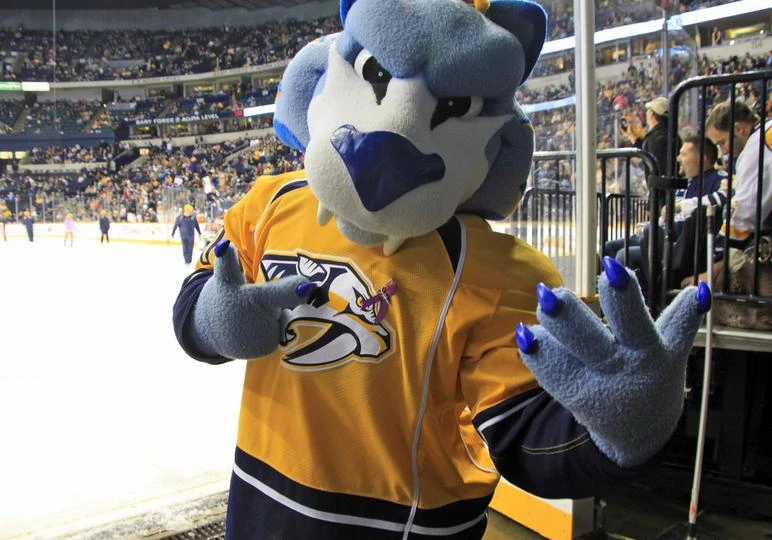


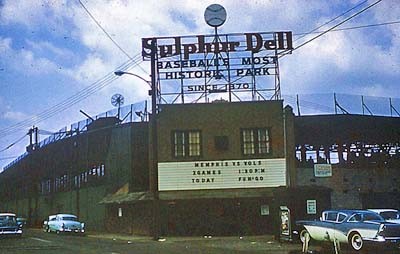
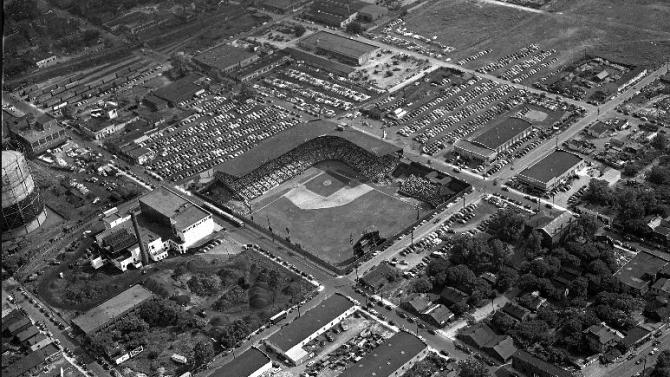
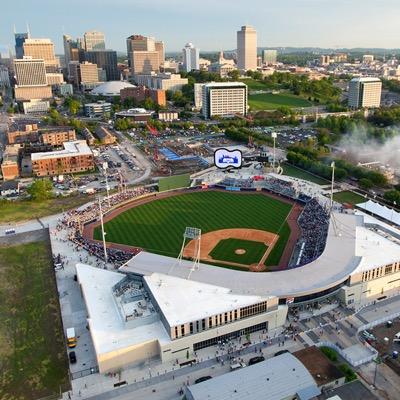



No comments:
Post a Comment